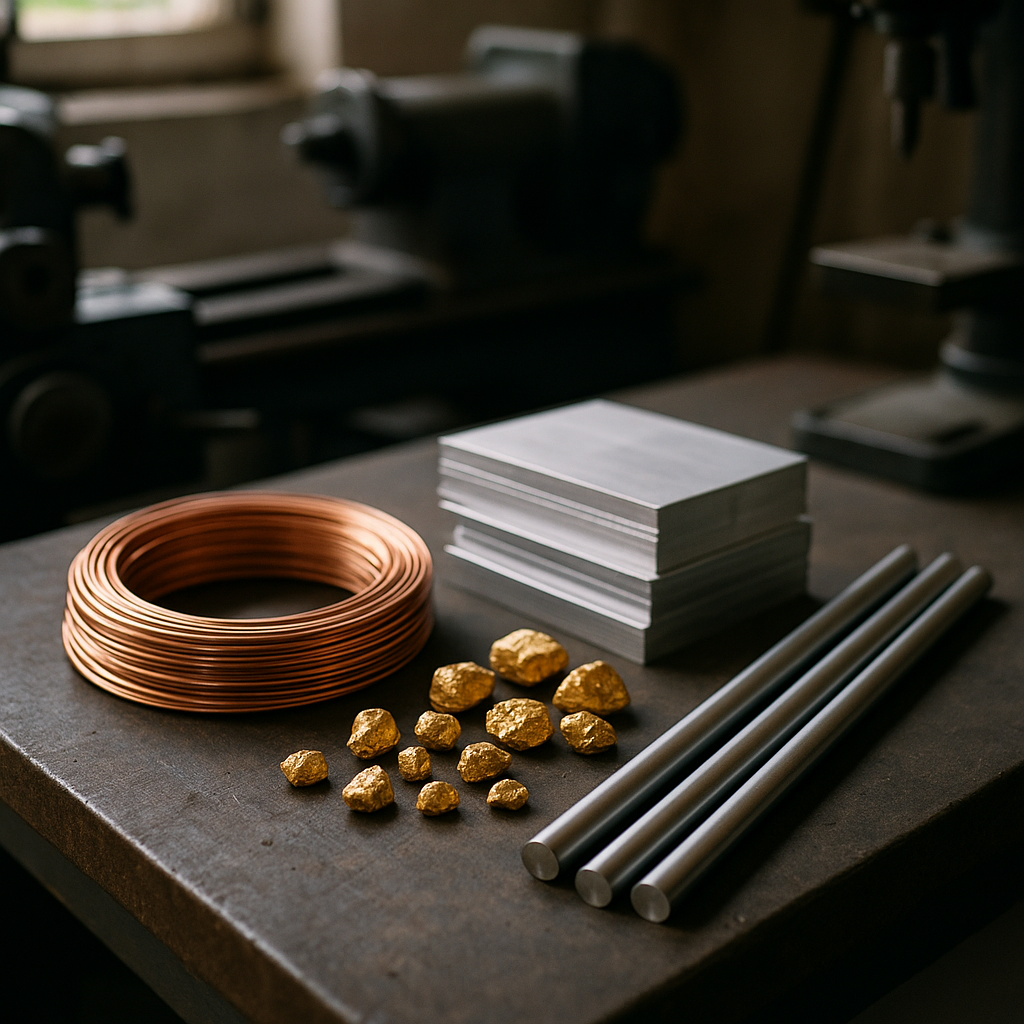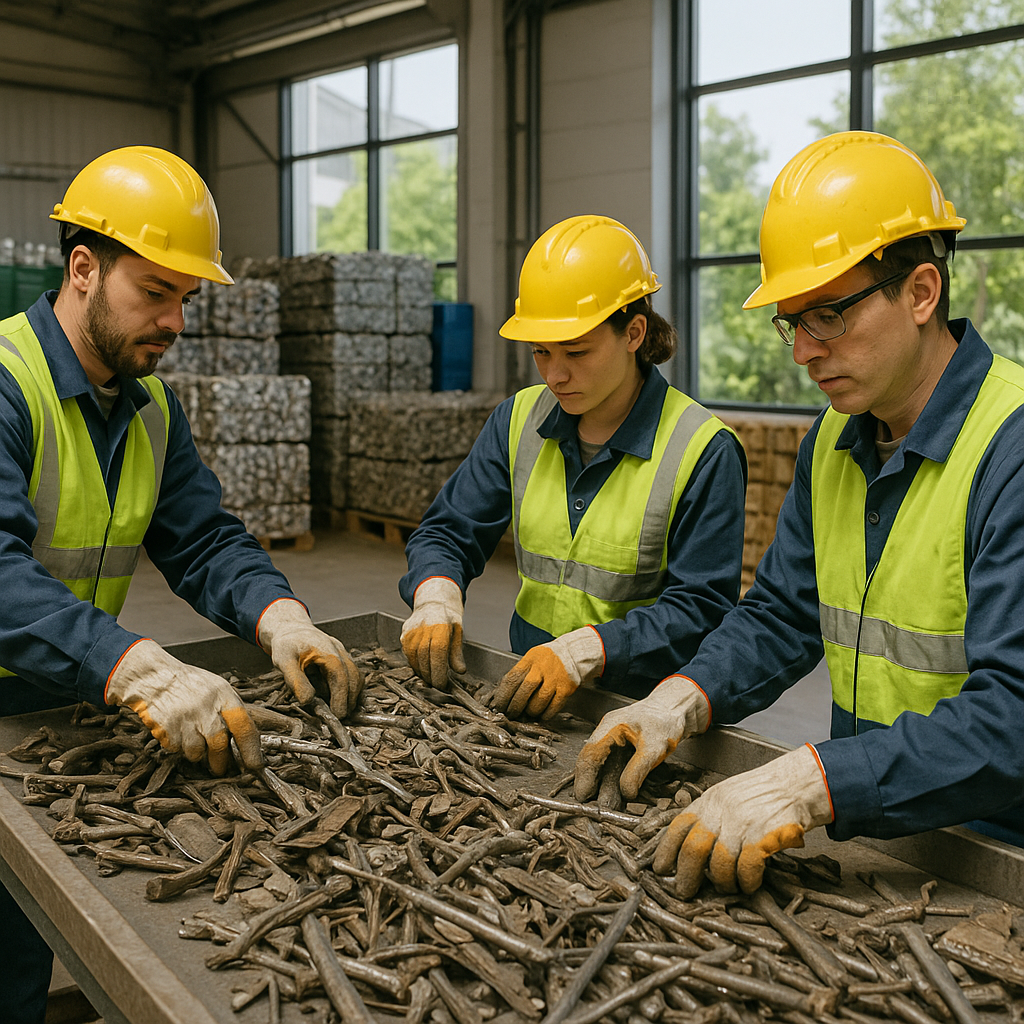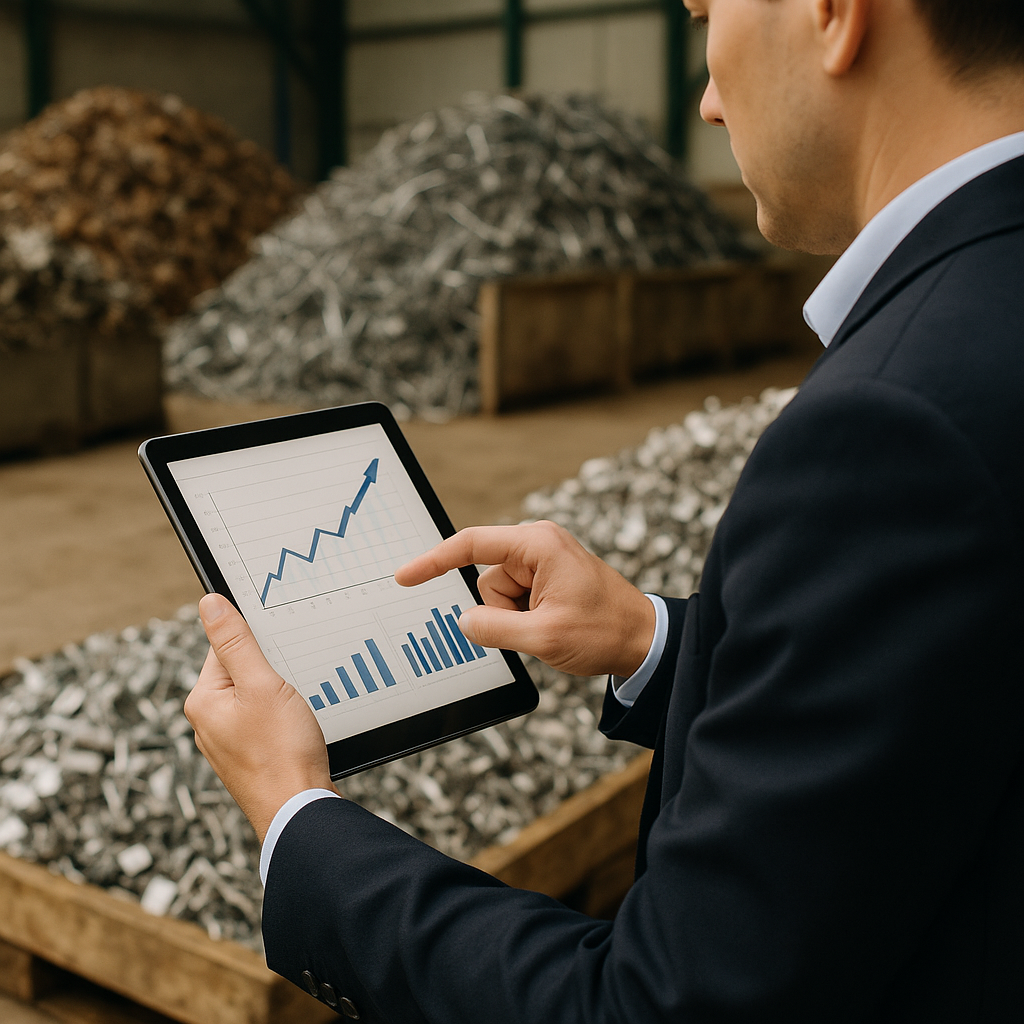5901 Botham Jean Blvd, Dallas, TX 75215
Discover the Difference Between Ferrous and Non-Ferrous Metal Recycling?
August 13, 2025Understanding the difference between ferrous and non-ferrous metals is crucial in metal recycling. The distinction is straightforward: ferrous metals contain iron, while non-ferrous metals do not.
Ferrous metals, such as steel, cast iron, and wrought iron, possess magnetic properties that make them easily identifiable. These metals offer exceptional strength and durability and are staples in construction, automotive manufacturing, and structural applications. Their magnetic nature allows recyclers to separate them efficiently using magnets during the sorting process.
Non-ferrous metals, including aluminum, copper, brass, lead, and zinc, present a different narrative. These metals lack iron content and are not magnetic. They typically weigh less than ferrous metals, offering superior resistance to rust and corrosion. This makes them ideal for outdoor applications like roofing and gutters. Due to their greater scarcity and valuable properties, non-ferrous metals generally command higher prices in the recycling market.
Ferrous vs. Non-Ferrous Metal Recycling: Key Differences

What Makes a Metal Ferrous or Non-Ferrous?
The difference comes down to one fundamental element—iron. Ferrous metals contain iron, giving them distinct magnetic properties and making them more susceptible to rust. Non-ferrous metals, on the other hand, contain little to no iron, which means they are not magnetic and generally resist corrosion far better. This seemingly simple distinction affects not just their physical properties but also their uses, market value, and recycling processes.
Examples of ferrous metals include carbon steel, stainless steel, cast iron, and wrought iron. Non-ferrous metals encompass aluminum, copper, brass, zinc, lead, tin, and precious metals such as gold, silver, and platinum.
Recycling Ferrous Metals
Ferrous metals form the structural backbone of modern society. From skyscrapers and bridges to cars and industrial machinery, they are prized for their exceptional strength and durability. In recycling facilities, their magnetic properties make separation quick and cost-effective—giant industrial magnets pull ferrous scrap away from other materials almost instantly. Once sorted, the metal is shredded into manageable pieces to speed up melting and improve furnace efficiency. The shredded material is then melted in electric arc furnaces, which require significantly less energy than producing steel from raw iron ore.
After melting, impurities are removed, and the purified molten steel is cast into new forms, such as beams, rebar, or sheet metal. The remarkable aspect of ferrous metal recycling is its closed-loop nature: steel can be recycled infinitely without losing strength or structural integrity.
Recycling Non-Ferrous Metals
Non-ferrous metals are lighter, more corrosion-resistant, and often more malleable than their ferrous counterparts. These qualities make them ideal for specialized applications such as electrical wiring (copper), aircraft construction (aluminum), plumbing (brass and copper), and architectural elements (zinc and bronze). Since magnets cannot detect them, recyclers rely on other separation techniques such as eddy current separators, density-based sorting, or meticulous manual inspection.
After separation, the metals are cleaned, shredded, and melted to remove any residual contaminants before being cast into ingots or billets for reuse. Because non-ferrous metals are less abundant in the earth’s crust, they typically command much higher market prices—sometimes several times more than ferrous scrap—making their recovery especially profitable. For example, copper recycling alone can yield significant returns due to its high demand in electrical and renewable energy industries.
Why the Difference Matters in Recycling
Understanding whether a metal is ferrous or non-ferrous shapes both environmental impact and economic outcomes. Recycling ferrous metals reduces the demand for iron ore mining, which in turn lowers the consumption of coal and limestone used in traditional steelmaking. This prevents habitat destruction, reduces greenhouse gas emissions, and conserves finite natural resources.
Recycling non-ferrous metals delivers even greater resource savings; for instance, recycling aluminum uses up to 95% less energy than producing it from bauxite ore, while copper recycling conserves roughly 85% of the energy required for primary production. Economically, proper classification ensures recyclers can sell each type at its highest market rate. A load that is carefully separated into its ferrous and non-ferrous components can be worth several times more than an unsorted batch, making sorting a financially strategic step.
Practical Identification in the Field
Identifying metal types in real-world settings does not require advanced tools. The magnet test remains the simplest and most reliable method: if a magnet sticks, the material is ferrous; if it doesn’t, it is non-ferrous. Visual and tactile cues also help. Ferrous metals tend to be heavier for their size and may show reddish-brown rust over time.
Non-ferrous metals are often lighter, with distinctive natural colors—copper’s reddish hue, brass’s warm yellow tone, and aluminum’s silvery-white finish. Even corrosion patterns differ: while ferrous metals flake and degrade as rust develops, non-ferrous metals form a stable oxidation layer, such as the green patina that develops on copper, which can even protect the underlying metal from further damage.
What Are the Environmental Benefits of Customized Metal Recycling?

Recycling both ferrous and non-ferrous metals provides substantial environmental benefits, including energy conservation, emissions reduction, and resource preservation. The customized approach to metal recycling enhances these advantages by optimizing material recovery rates and processing efficiency.
When metals undergo customized recycling processes, the environmental impact is significantly reduced compared to traditional mining and manufacturing. This efficiency results from specialized sorting technologies and recovery techniques that maximize usable material from metal waste streams.
Energy Conservation
One of the most compelling environmental benefits of customized metal recycling is the marked reduction in energy consumption. Across all metal types, the energy savings compared to producing metals from virgin materials are substantial.
Recycling aluminum saves up to 95% of the energy required to produce it from bauxite ore. For each ton of aluminum recycled, approximately 9 tons of CO₂ emissions are prevented from entering the atmosphere. This energy conservation is particularly significant given the energy-intensive nature of primary aluminum production.
Steel recycling offers similar benefits, requiring 60-70% less energy than producing new steel from iron ore. Each ton of recycled steel prevents about 2 tons of CO₂ emissions. The U.S. Geological Survey reports that around 60% of steel production now relies on recycled iron and steel scrap.
Copper recycling conserves roughly 85% of the energy needed to extract and process new copper, preventing up to 3.5 tons of CO₂ emissions per ton recycled.
Resource Conservation
Customized metal recycling significantly reduces the need for raw material extraction. Mining for metals like aluminum, copper, and iron causes substantial environmental damage through deforestation, habitat destruction, and soil degradation.
Every ton of steel recycled conserves approximately 2,500 pounds of iron ore, 1,400 pounds of coal, and 120 pounds of limestone. These savings reduce land disturbance and preserve natural landscapes that would otherwise be disrupted by mining activities.
Tailored sorting techniques in customized recycling ensure recovery of even small amounts of valuable metals, further reducing the demand for virgin materials. Advanced separation methods can recover metals from complex waste streams that would otherwise end up in landfills.
Emissions Reduction
The reduction in greenhouse gas emissions through customized metal recycling is substantial. Optimizing recycling processes for specific metal types maximizes emissions benefits.
The metal recycling industry annually saves approximately 500 million tons of CO₂ emissions, equivalent to removing over 110 million cars from roads. This significant contribution to climate change mitigation makes metal recycling an effective environmental protection strategy.
Customized recycling facilities use technologies that minimize additional emissions during the recycling process. Modern electric arc furnaces for recycling steel produce significantly fewer emissions than traditional blast furnaces used in primary steel production.
Water and Air Quality Improvements
Beyond energy and emissions benefits, customized metal recycling also reduces water and air pollution. Mining operations typically generate acidic runoff and release toxins that can contaminate water supplies. By reducing the need for mining, recycling protects water resources.
Air quality benefits from reduced smelting and refining operations since primary metal production releases particulates and other pollutants that contribute to respiratory issues and environmental degradation. Recycling processes typically result in fewer airborne contaminants.
The combined environmental benefits of customized metal recycling highlight the importance for businesses and communities to prioritize proper metal waste management. By implementing tailored recycling programs for specific metal waste streams, organizations can maximize these environmental advantages while also realizing economic benefits.
Advancements in sorting and processing technologies continue to enhance the environmental benefits of metal recycling. The development of more efficient separation techniques and energy-efficient melting processes further bolsters the sustainability of the metal recycling industry.
How Does Customized Recycling Impact the Economic Value of Scrap Metal?

Separating ferrous and non-ferrous metals is essential for maximizing economic value in scrap metal recycling. Non-ferrous metals like copper, aluminum, brass, and bronze generally command significantly higher prices compared to ferrous metals. When metal types are mixed, recyclers often value the entire load at the lower ferrous rate, greatly reducing potential returns.
The price difference between these metal categories is substantial. For example, while ferrous scrap might sell for $150-300 per ton, non-ferrous metals like copper can fetch $3-4 per pound, making proper sorting a financial imperative. This stark contrast in market value is due to the unique properties and demand patterns for different metal types in industries such as manufacturing and construction.
Beyond the basic ferrous/non-ferrous separation, further categorization by grade significantly impacts pricing. Take copper recycling as an example: bare bright copper wire typically sells for 30-40% more than copper with insulation. Similarly, #1 copper (99% pure) can command nearly double the price of #2 copper, which contains impurities or attachments. These price variations exist across all metals, from aluminum extrusions to brass plumbing fixtures.
The economic impact of proper sorting is demonstrated by a practical example. A mixed load of demolition scrap weighing 2,000 pounds might sell for $200 when unsorted. However, if the load is correctly sorted into 1,500 pounds of steel ($150), 300 pounds of aluminum ($300), and 200 pounds of copper ($600), the total value increases to $1,050. This represents a 425% rise in value through strategic sorting.
Customized recycling processes also enhance material tracking and documentation. This transparency not only builds trust with recycling partners but also helps businesses showcase their sustainability efforts to stakeholders and customers. Many companies now use their metal recycling programs as part of their environmental responsibility initiatives, creating additional brand value.
For manufacturing facilities, sorting and grading production scrap can transform what was once a waste disposal cost into a revenue stream. Businesses that implement dedicated collection systems for different metal types can negotiate better rates with recyclers due to the reduced processing needed at the recycling facility. This efficiency directly translates into higher payouts.
Market volatility is another factor making customized recycling economically advantageous. Scrap metal prices fluctuate based on global market conditions, manufacturing demand, and economic indicators. When metals are properly sorted and graded, businesses can time their sales strategically, holding valuable materials during price dips and selling during favorable market conditions.
The equipment investment required for proper sorting and processing varies by operation scale. While large facilities might benefit from magnetic separators and advanced sorting technology, even small businesses can implement manual sorting protocols that significantly increase material value. The return on investment for these systems is often measured in months rather than years, especially for operations handling substantial metal volumes.
Conclusion: The Future of Customized Ferrous and Non-Ferrous Metal Recycling
The future of metal recycling is being shaped by advanced technologies. AI and robotics are dramatically improving the sorting and processing of ferrous and non-ferrous metals. These technologies enhance accuracy and efficiency while reducing contamination rates. Machine learning algorithms now identify specific alloys and grades with unprecedented precision. This customization enables recyclers to recover higher-value materials and minimize waste throughout the process.
The emphasis on sustainability continues to drive innovation in metal recycling. Both ferrous and non-ferrous recycling are vital in reducing mining impacts and conserving natural resources. Understanding the differences between these metal types is crucial for effective recycling programs.
For assistance with metal sorting practices or to optimize the value of your recyclable metals, contact Okon Recycling at 214-717-4083.
